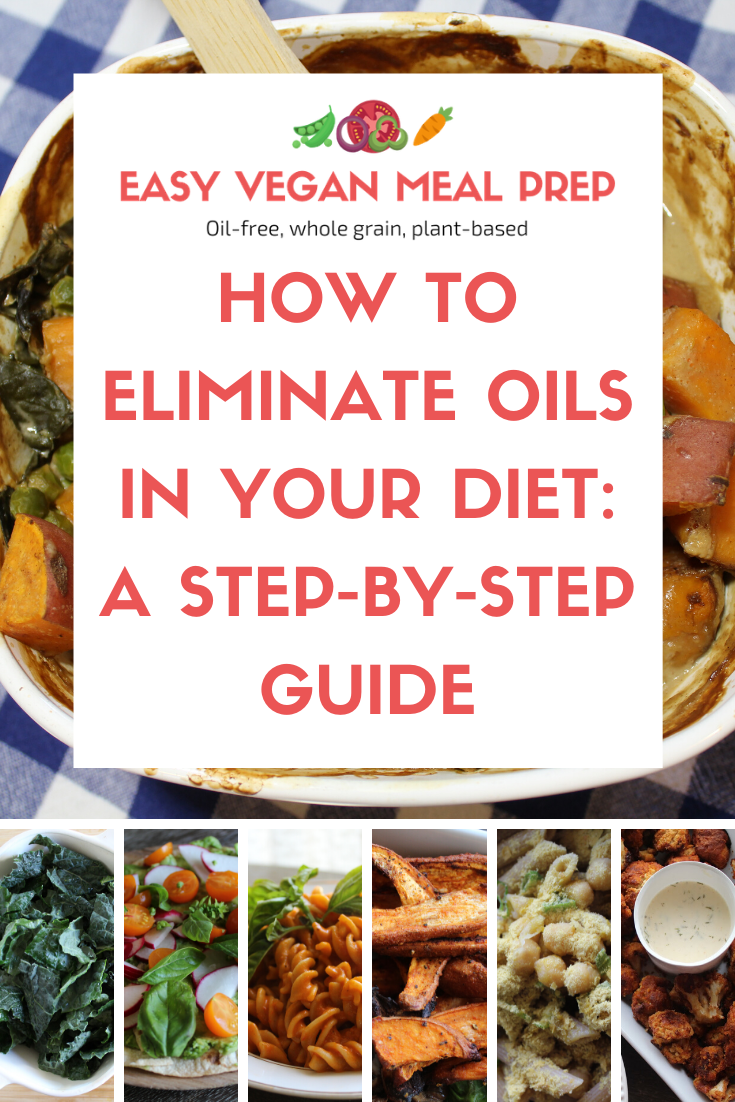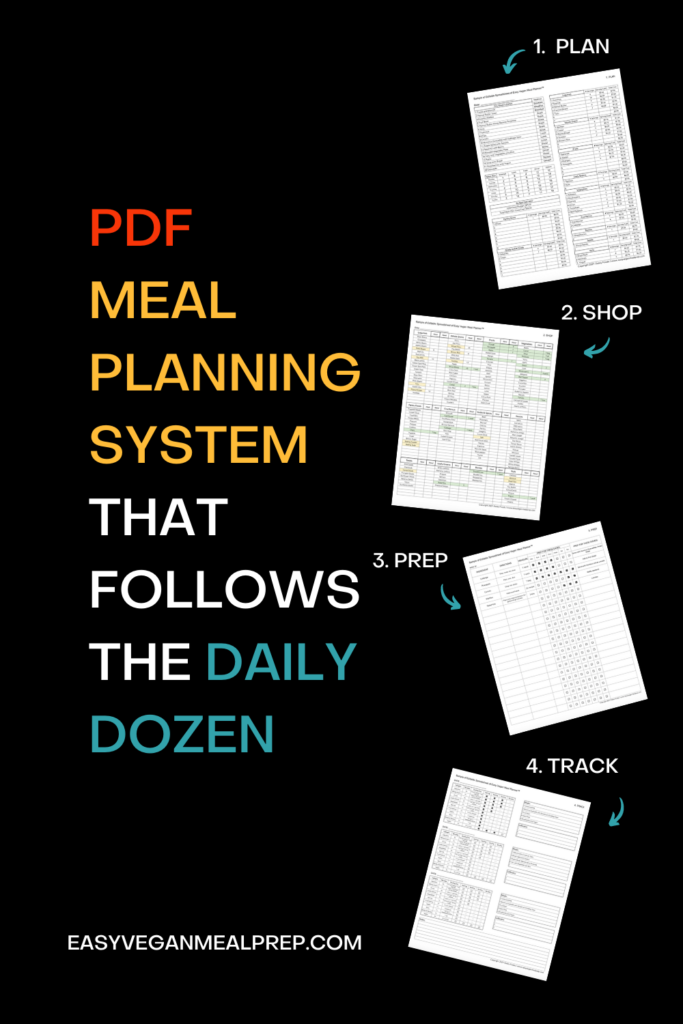Below is a step-by-step guide for how to eliminate oils in your diet. Follow these six easy steps and your transition from oil-packed foods to oil-free foods will be easy.
Welcome to Day 1 of the “Oil-free for 30 days” challenge! Give yourself a pat on the back for taking the initiative to improve your health by eliminating, or at the very least minimizing, added oils in your diet. At first, it’s a little hard to do, but after a little while it becomes easy. Over time, you’ll notice a difference if you eat something that contains oil, often times people will feel heavy and even nauseous, depending on the amount of oil consumed.
The goal with this challenge is to:
- Educate you about the benefits of oil-free cooking
- Provide you resources for eliminating oils in your diet
- Give you lifestyle tips and tricks
- Inspire you to eliminate, or greatly reduce, the amount of added oils in your diet
When you have all the information, you can make an informed decision each time you eat a meal.
Whether you plan to never eat added oils again, or eliminate oils in your home cooking, stop buying processed foods that contain oil, and request oil-free dishes while eating at restaurants, your body with thank you. When you add up all the added oils that are in nearly every packaged food and dish served at restaurants, as well as your own home cooking, the amount of oil we consume is mindblowing.
Limiting the amount of added oils that go into our bodies is important for our overall health and disease prevention. By taking this challenge, you are telling yourself and your community that you care about your health and are willing to do what is necessary to maintain a happy and healthy body.
Not only is eliminating added oil from your diet important, it’s also a joy! You’ll feel better when you body doesn’t have to process all that oil and can function at its best. Here’s a step-by-step guide to get you started.
How to eliminate oils in your diet
 Step 1: Clean out your pantry and fridge
Step 1: Clean out your pantry and fridge
First, go through your pantry and throw out anything that contains added oils. Check all your chips, crackers, packaged meals, cookies, desserts, ice creams, and snacks. Also throw out anything that contains animal products such as meat, eggs, milk, seafood and cheese. It may feel funny throwing this food away, but consider that it’s not healthy for our bodies anyhow so eating it is doing ourselves a disservice. You can donate the food if you choose to, but also consider that the food is also not healthy for other people’s bodies either.
Step 2: Tell your friends and family
Let the people around you know that you’re no longer eating food that is cooked with or made with added oils. This is an important step because this will help you get support, and also prevent you from accidentally eating added oils when being fed by others. It’s also a great way to get others on board.
Share this post about why added oils are harmful to our bodies with your friends and family >
Step 3: Plan your meals
The best way to stay on track and avoid eating added oils is to make a meal prep plan. This can be done any day of the week and it’s best to plan your meals 3-5 days in advance. You can write a simple list, or use our easy vegan meal planner tool. Planning ahead will help you stay satisfied on an oil-free plant-based diet, and helps save time and energy throughout your busy schedule.
Take some time to determine what your favorite meals are and make sure to keep their ingredients stocked in your fridge and pantry. This will make it easy to meal prep.
Step 4: Stock up on oil-free foods at the grocery store
Stock up on oil-free pantry staples at the grocery store, such as whole grains and sprouted grain breads, dried legumes, vegetables, fruits, mushrooms, nuts and seeds. Oil is added to a lot of foods that you wouldn’t think contain oil so be sure to read labels. Try new products that are oil-free and stock your pantry with items you enjoy.
Step 5: Find out where you can order oil-free dishes at local restaurants
Do a little research and find out where you can order oil-free plant-based menu items at your local restaurants. Menu items that are oil-free or can be easily made oil-free include spring rolls, salads, tacos, stir-frys, pasta, and sorbet. Doing this research ahead of time will save you energy and frustration if and when there comes a time that you decide to enjoy a meal out of the house.
Step 6: Invest in cookware and supplies
Consider investing in stainless steel cookware which is the easiest for oil-free cooking and baking. Also, stock up on unbleached, natural parchment paper and muffin liners. Parchment paper helps preventing your food from sticking to the pan while baking (and also saves time on cleanup). Reuse parchment paper if it doesn’t come in contact with hazardous foods such as meat, eggs, dairy and seafood.
Save this post on Pinterest and Facebook:



 Step 1: Clean out your pantry and fridge
Step 1: Clean out your pantry and fridge